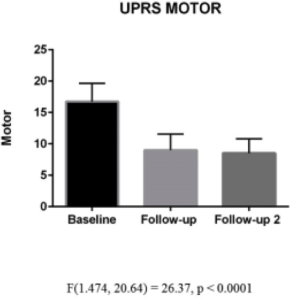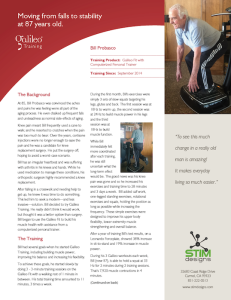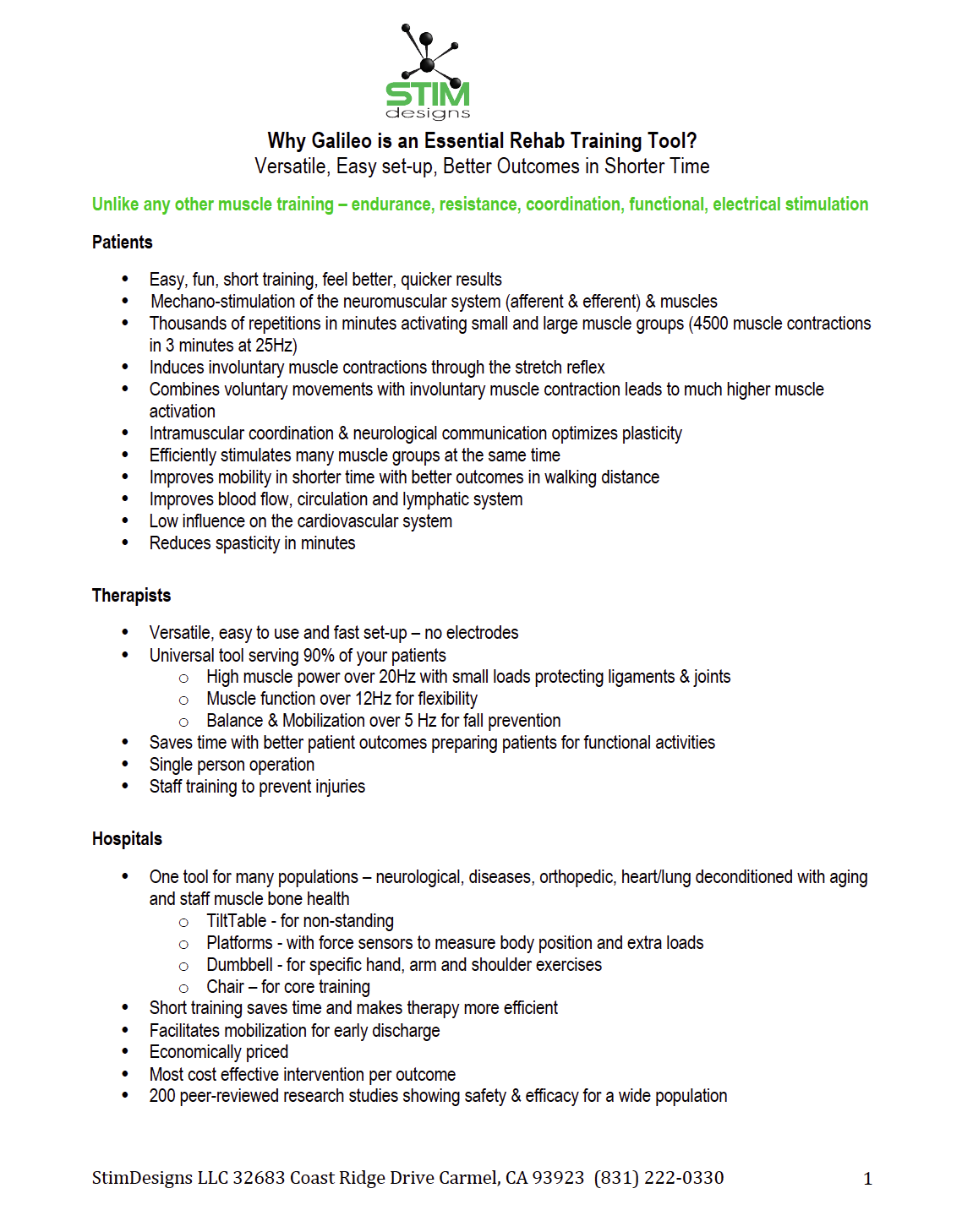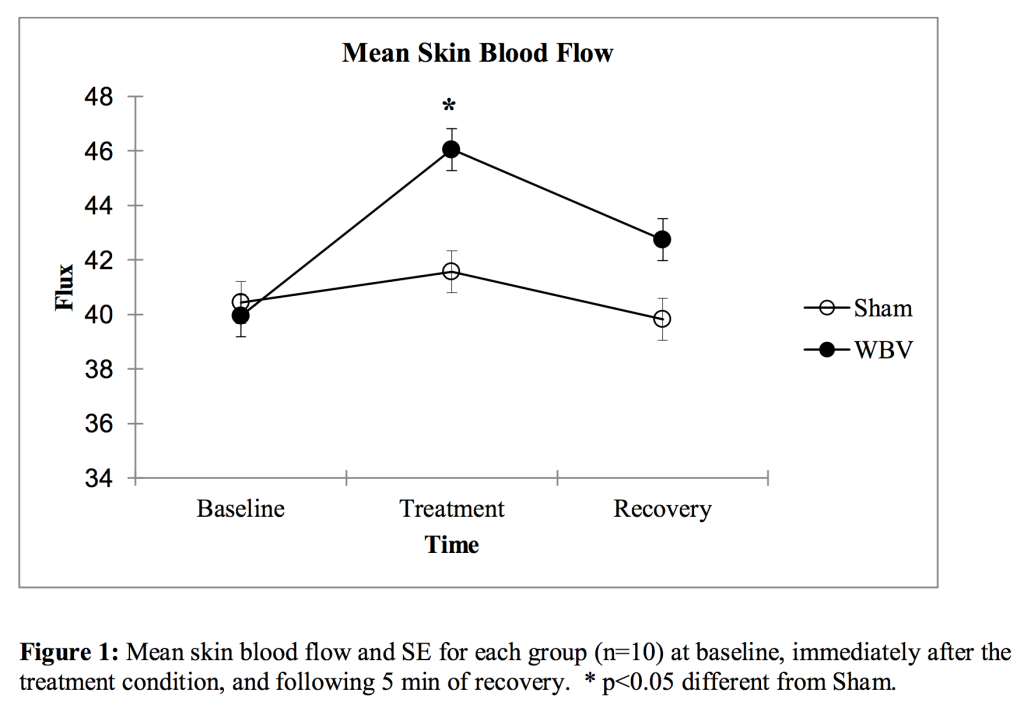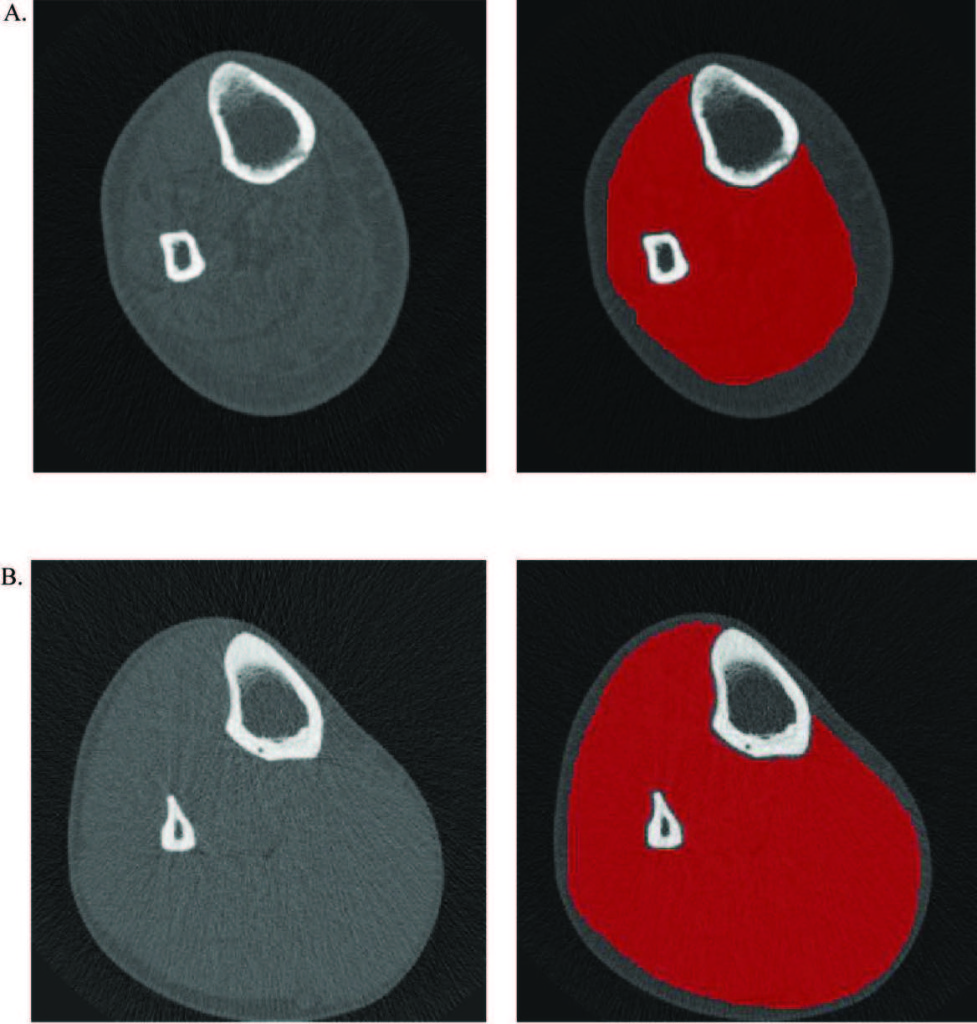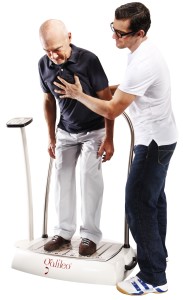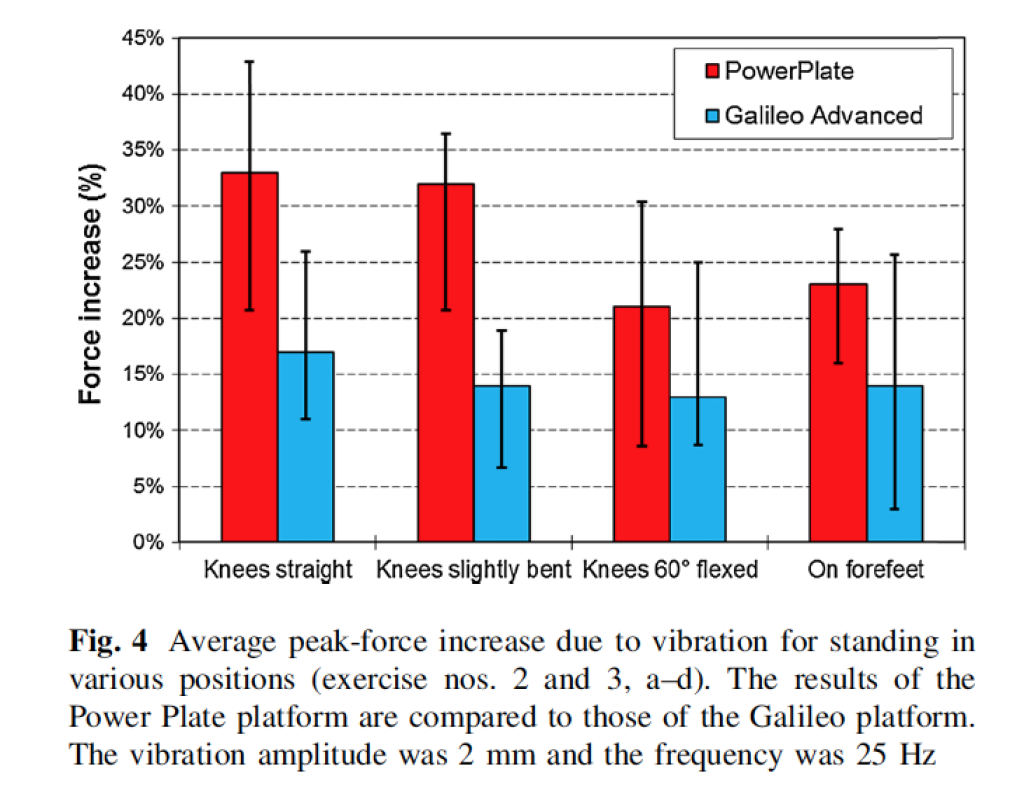UTEP News Service – Originally published April 3, 2015 – By Laura L. Acosta
The first time 68-year-old Carmen Sandoval climbed on the whole-body vibration machine in The University of Texas at El Paso’s Stanley E. Fulton Biomechanics and Motor Behavior Laboratory, she wasn’t sure how standing on the machine while it oscillated for five minutes was going to help improve her physical fitness.
Two months later, Sandoval’s muscle strength and bone density have increased, and she feels lighter on her feet. That has helped her chase more fly balls while playing softball with Senior Moments, an El Paso women’s slow-pitch softball team.
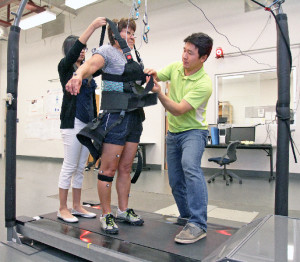
As part of the whole-body vibration study, Carmen Sandoval walks on a special treadmill, which simulates slipping by suddenly changing the moving direction of the belt. Participants are strapped into a harness to prevent injury. Photo by J.R. Hernandez / UTEP News Service
“It gives me more blood circulation in my legs,” Sandoval said. “I feel more energized and I don’t feel heavy on my legs.”
Sandoval is taking part in one of two studies by Feng Yang, Ph.D., an assistant professor in the Department of Kinesiology at UTEP, who is researching the impact of whole-body vibration training on adults 65 years and older and on people with multiple sclerosis, or MS.
In whole-body vibration therapy, a person stands on a vibration platform. As the machine vibrates, the transmission of mechanical vibrations and oscillations to the human body forces all muscles to contract and relax tens of times each second, and leads to physiological and neuromuscular changes that can reduce falls among individuals at greater fall risk.
In November, Yang received a $78,148 grant from The Retirement Research Foundation to investigate if whole-body vibration training can prevent real-life falls in Hispanic older adults. His co-principal investigators are Loretta Dillon, DPT, clinical associate professor in the Department of Physical Therapy, and Xiaogang Su, Ph.D., associate professor in the Department of Mathematical Sciences.
Yang, along with Dillon and Su, also were awarded a separate $43,297 pilot grant from the National Multiple Sclerosis Society to use the technique to study its effect on preventing falls in individuals with MS.
“Whole-body vibration is a relatively novel training approach which we can use to reduce the risk of falls for older adults or for people with movement disorders,” explained Yang, the lab’s director since 2013. “This vibration can increase muscle strength and improve the body balance and it can also improve the function in mobility, sensation, bone density and all those factors that are closely related to falls.”
The Centers for Disease Control and Prevention reports that falls are the leading cause of both fatal and nonfatal injuries among older adults, and the consequences of falls are very costly.
For his study, Yang developed an eight-week training program for 100 adults ages 65 years and older to investigate whether or not whole-body vibration training can reduce their risk of falling and if the training is still effective three months after they finish the program. Since June 2014, about 50 older adults have participated in the 18-month study.
Participants use the whole-body vibration machine for five minutes, three times a week for eight weeks.
To test if the training has improved their resistance to falls, participants walk on a special treadmill, which simulates a slipping sensation by suddenly changing the moving direction of the belt. Participants are strapped into a harness to prevent injury.
Thirty reflective markers are attached to their skin on different parts of the body, which allow their movements to be recorded using the lab’s eight-camera high-speed motion capture system. The captured motion data will be utilized to analyze the improvement in fall resistance skills resulting from the vibration training.
The goal is to see how a person regains balance after a slip without falling to the ground.
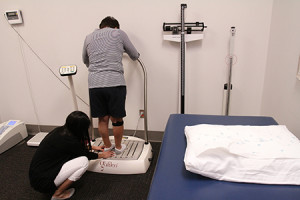
Carmen Sandoval stands on the whole body vibration machine in UTEP’s Biomechanics and Motor Behavior Laboratory. Feng Yang, kinesiology assistant professor, is studying the effects of whole-body vibration on adults 65 years and older and people with multiple sclerosis. Photo by J.R. Hernandez / UTEP News Service
“It (feels) like when we really stumble because we don’t know when we’re going to stumble,” Sandoval said after the treadmill stopped suddenly and she was jolted backward before regaining her composure.
Yang also evaluates the participants’ progress by measuring their muscle strength, bone density, sensation, range of motion, fear of falling, and functional mobility. All participants’ real-life fall incidences also are monitored.
Yang said the results of the study so far have been encouraging. Besides the significant improvements in all risk factors of falls among the participants, their slip-related falls on the treadmill and the fall incidences in everyday living have been reduced by about 70 percent and 30 percent, respectively.
He is currently recruiting 40 participants for his multiple sclerosis study. The National Multiple Sclerosis Foundation estimates that more than 400,000 people in the U.S. have MS. This project has particular significance for the El Paso region, which has been identified as a nationally-recognized cluster of MS by the society.
“We also want to prevent falls for patients with MS because their fall risk is even higher,” Yang said. “Their muscles are weak, their balance and sensation are impaired and MS also affects their mobility. All of those factors contribute to falls.”
Through whole-body vibration training, Yang hopes to develop a training paradigm that involves the least amount of physical activity for individuals with MS to reduce their risk of falls.
Yang is looking for participants with mild to moderate MS who have fallen at least once in the past six months for his study. Participants will take part in whole-body vibration training for five minutes a day, three days a week for four weeks.
Before the training begins, participants will be assessed to determine how many times they have fallen in the last six months. Their fall risk factors, including body balance, functional mobility, muscle strength, fear of falling and sensorimotor skills, also will be evaluated before and after the training to document any improvement.
Yang and his collaborators also are planning to apply vibration therapy to individuals with other movement dysfunctions, such as stroke and Parkinson’s disease. The long-term goal of their research is to develop cost-efficient yet effective community-based fall prevention training programs and to reduce the costs to individuals and the health care system resulting from falls among the elderly and populations with movement impairments.
Helping Yang achieve that goal are 10 research assistants from the undergraduate and graduate kinesiology programs at UTEP. They include: Chelsea Villa, Joshua Padilla, Westin Humble, Amy Lucero, Joe Anthony Rodriguez, Carlos Lopez, Maria Sanchez, JaeEun Kim, Jose Munoz and Edson Estrada.
In January 2014, Villa began working with Yang in the biomechanics lab as an undergraduate research assistant. She graduated from UTEP in December 2014 and plans to start the Doctor of Physical Therapy program in May.
From gathering medical histories, testing the participants and analyzing data, Villa said her experience working with Yang will help prepare her to become a better physical therapist.
“I know how important clinical-based research is when applied to the real world,” Villa said. “That’s the whole reason why research is done: to see what works and what doesn’t. Sometimes we think something does work and then we do the research and it turns out that it doesn’t. I know now what information is important to analyze and what information is not.”
To participate in either study, contact Yang at 915-747-8228 or 915-747-6010 or by email at fyang@utep.edu.


